Curdled broth, a delicacy of the Venezuelan Andes (English/Spanish)
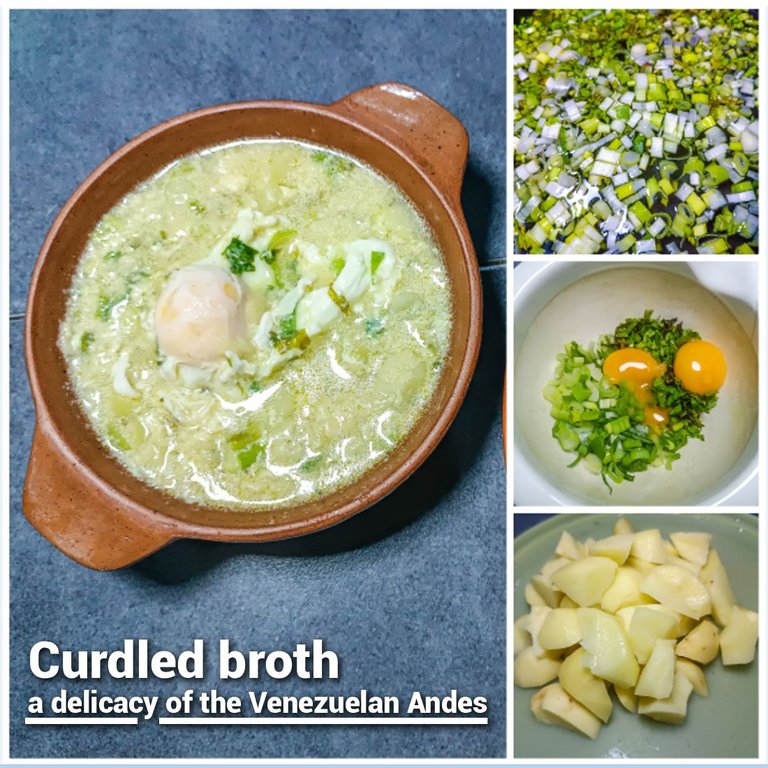
A loving greeting to all my Hive friends, especially to the cooking lovers. Today I bring you one of my favorite recipes, which I have been wanting to share with you since I started at Hive. This is the caldo cuajado, also known as pizca andina. This is one of the most representative dishes of the Andean region of Venezuela. This recipe is also very special to me because it is the most beautiful inheritance that the women of my family left me on my mother's side, my grandmother prepared it throughout her life and taught its preparation to my aunts and my mother, who competed with each other to see who could make it more like my grandmother. I grew up in that fun competition and I can modestly say that of the granddaughters, I was the one who learned the art of caldo cuajado the best. And not because I say so, but because at family gatherings I was always asked to make it for breakfast in the cool mornings of the city of San Cristobal, because according to my aunts and uncles it was just like my grandmother's.
Here are the ingredients and the step-by-step to make four portions of the wonderful and traditional curdled broth.
Ingredients
- 4 eggs
- 4 medium potatoes
- 50 grams of long onion
- 250 milliliters of milk
- ½ green sweet bell pepper
- 5 soda crackers
- 1 tablespoon garlic
- ½ tablespoon cumin
- Water
- Cilantro
- Oil
- Salt
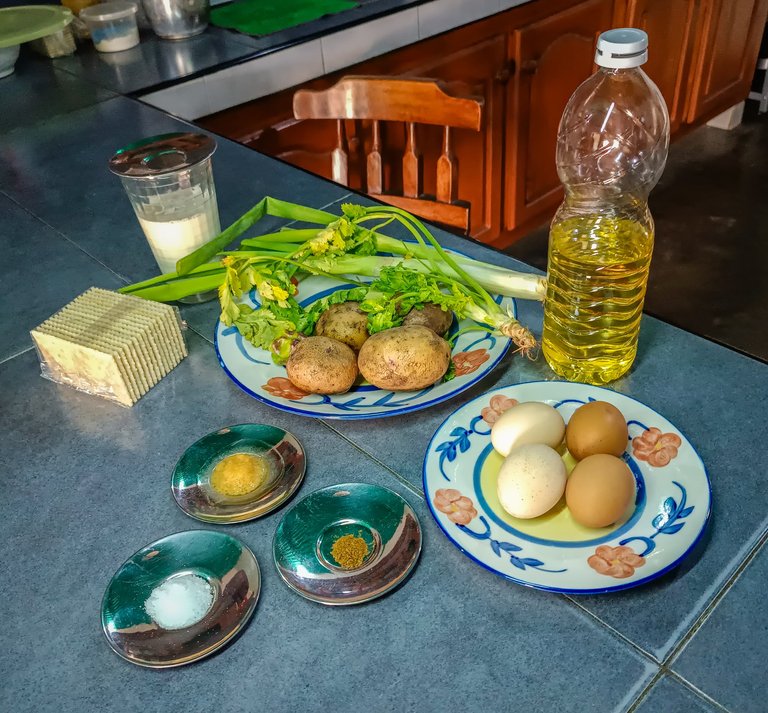
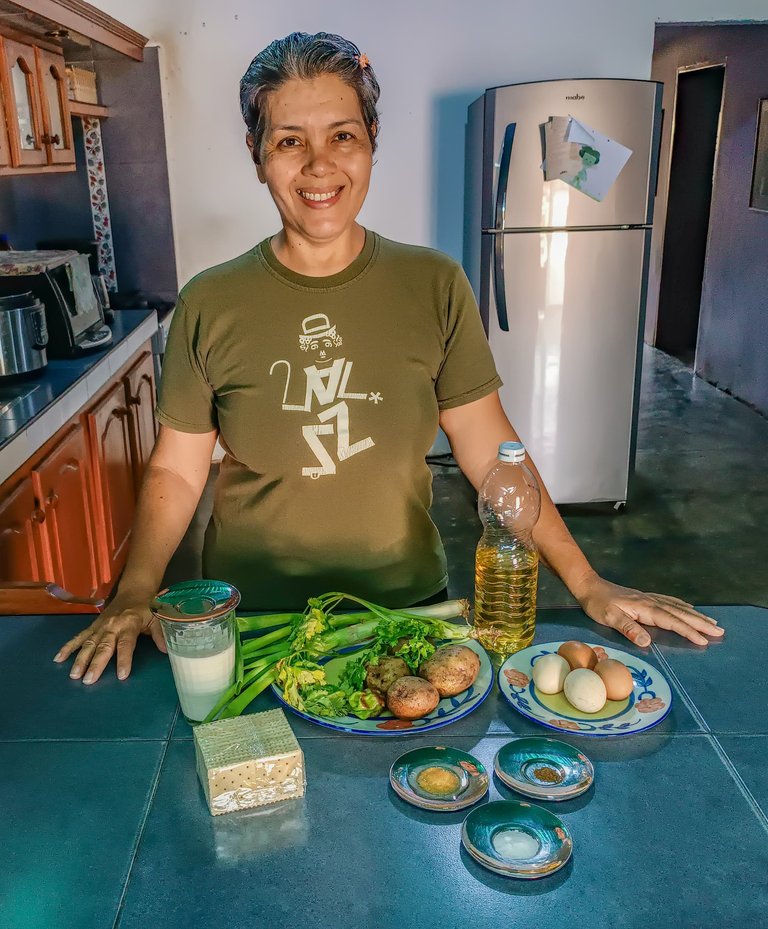
The first thing we are going to do is to chop the long onion, the sweet bell pepper and the cilantro. Once we have our vegetables chopped, we are going to separate them into two parts, the long onion and the cilantro. One of these two parts we will throw it to the mortar of kitchen and we will incorporate ½ spoonful of ground garlic, here the magic will happen.
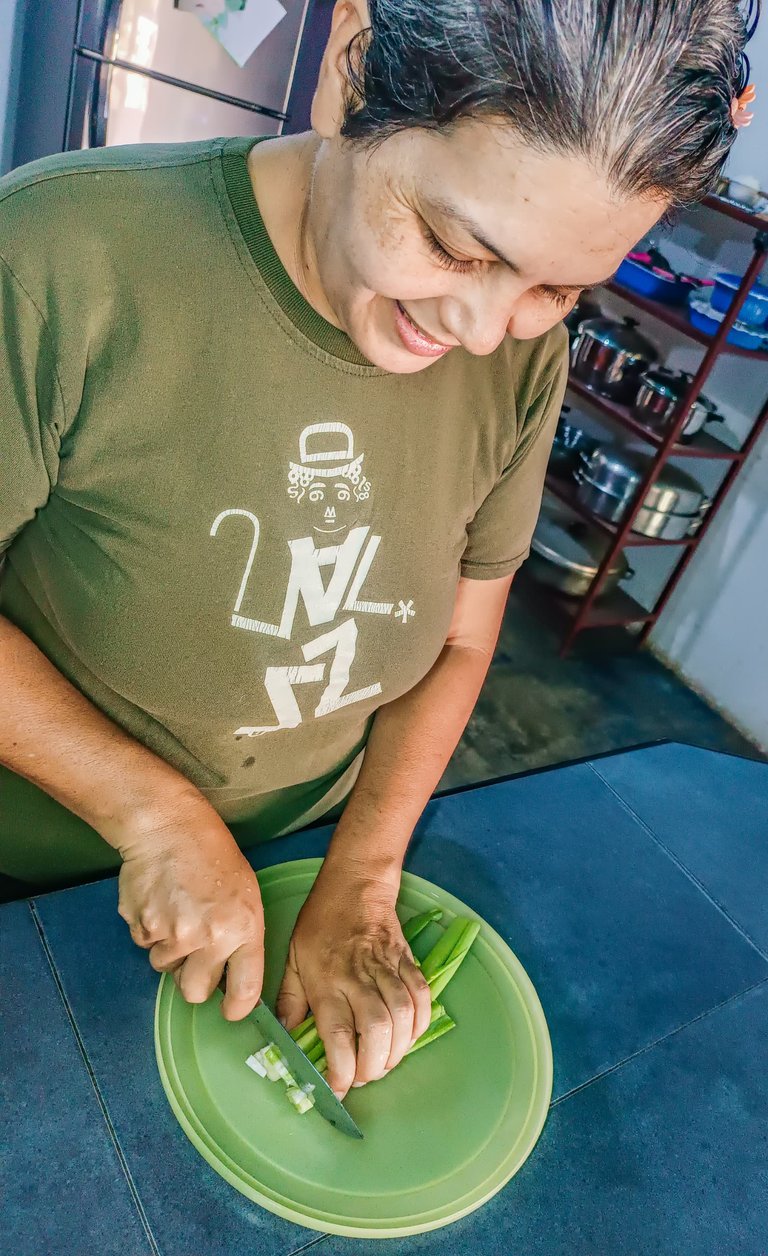
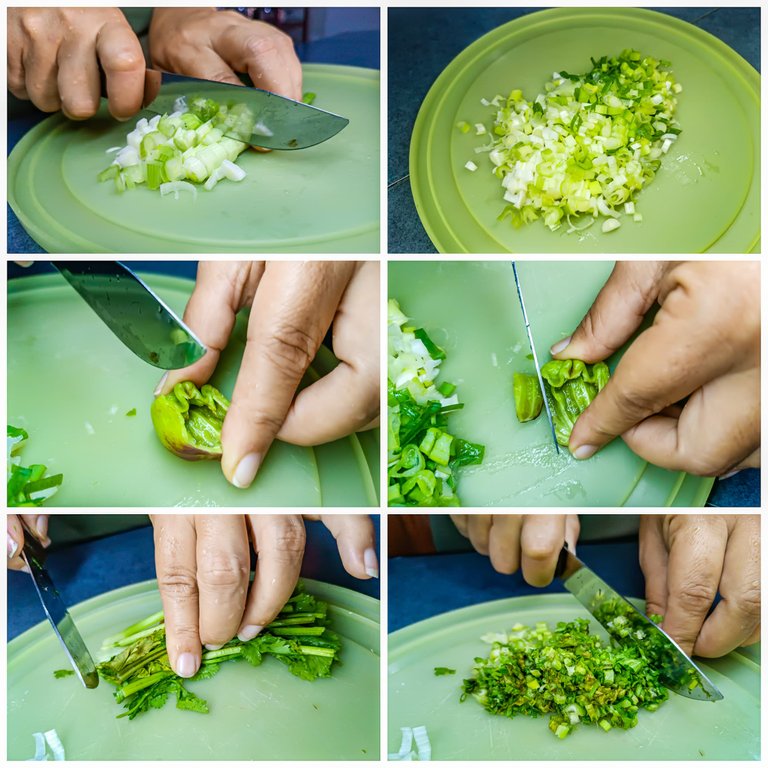
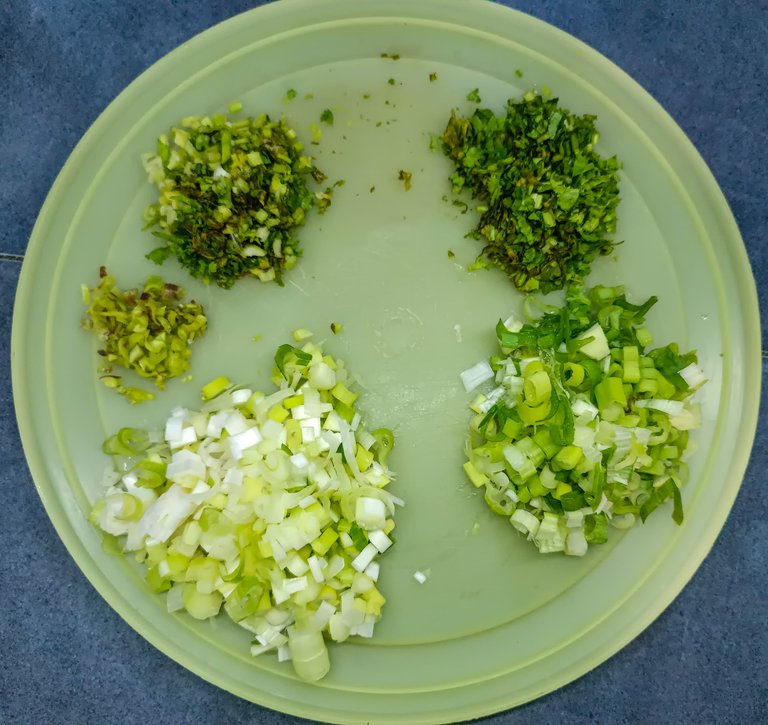
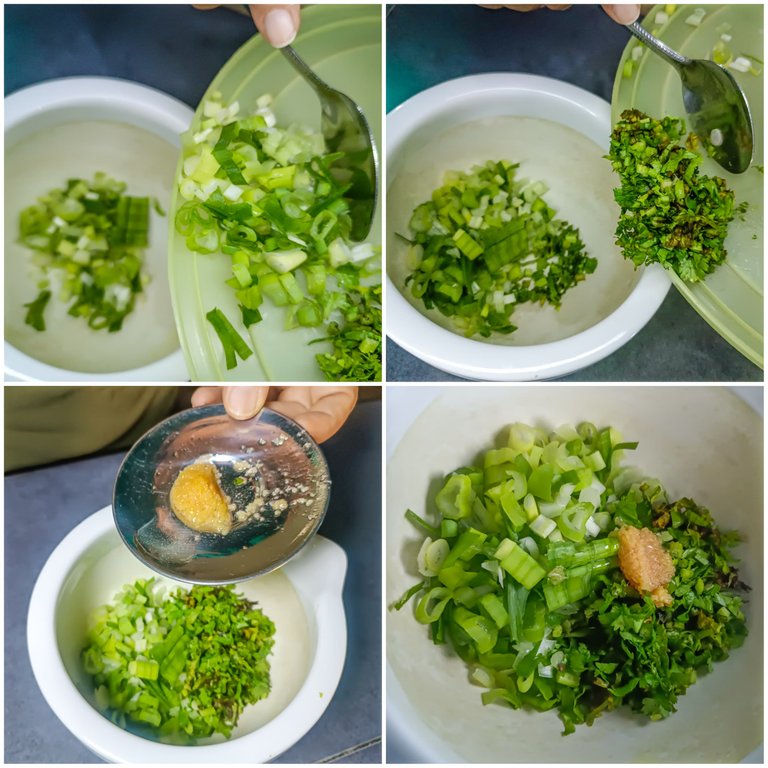
But before we get down to what we have in the mortar, we will put 1.2 liters of water in our favorite pot and to this we will add the rest of the long onion and cilantro, along with the sweet chili, ½ tablespoon of cumin, 1 tablespoon of salt, dash of oil and another ½ tablespoon of garlic.
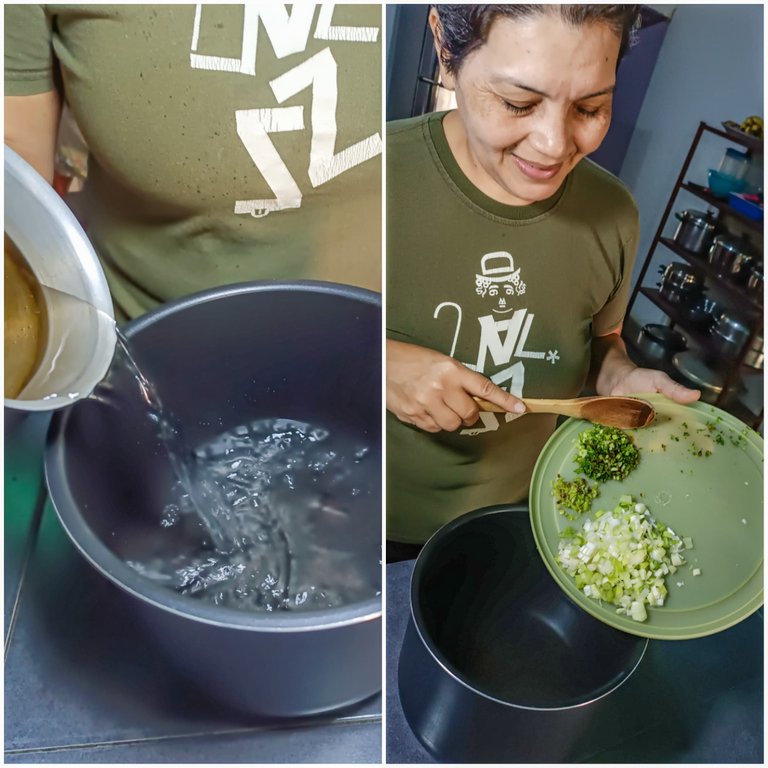
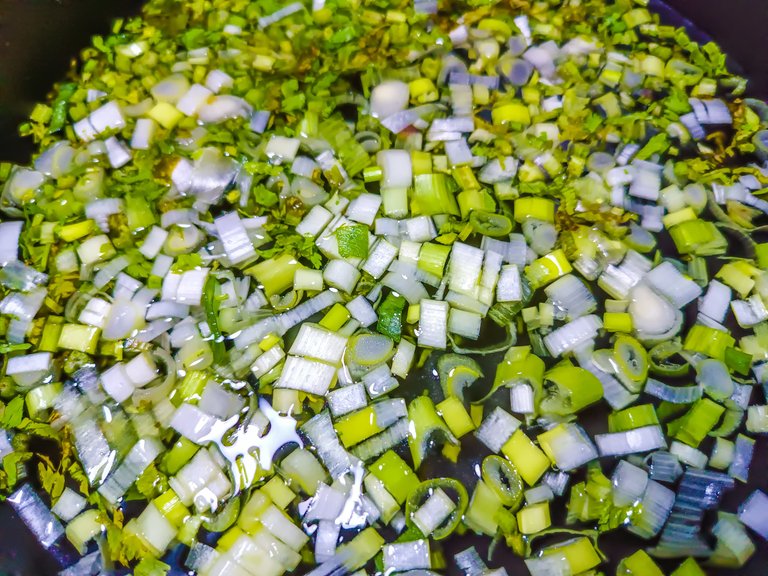
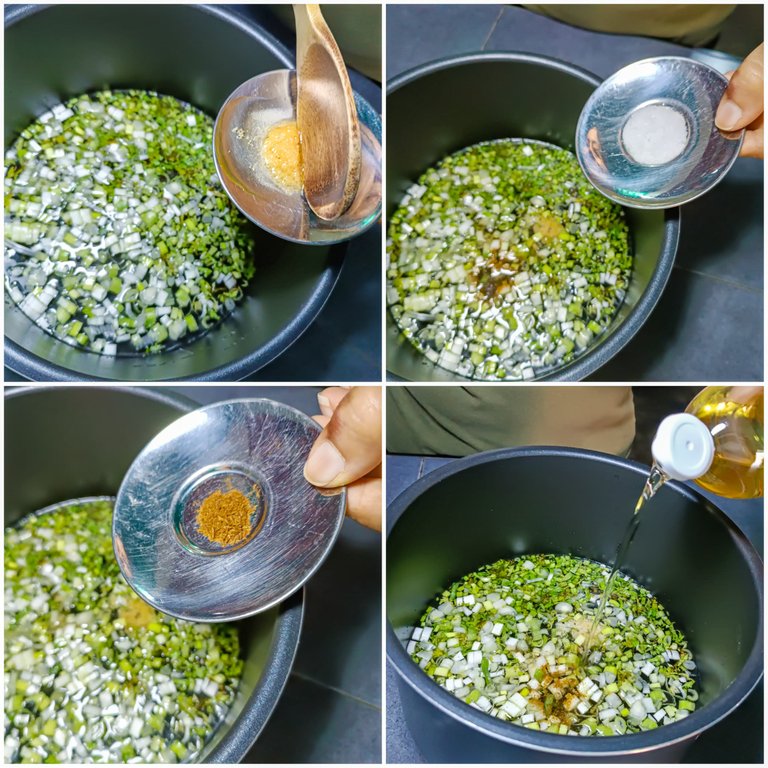
Now we will prepare ourselves to peel and to cut the potatoes, and at the moment in which the water boils we will throw them in her.
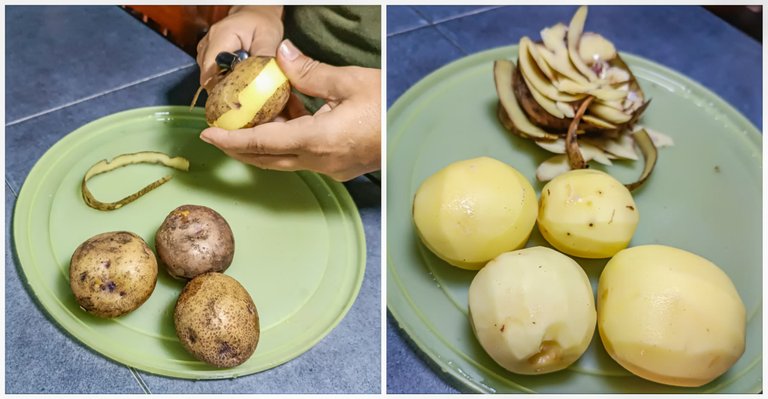
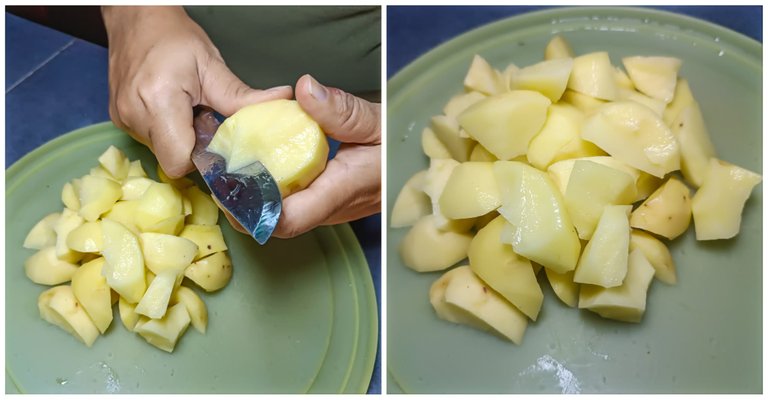
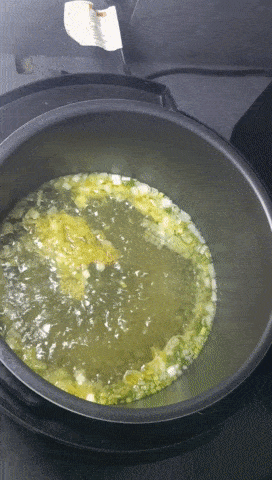
Meanwhile we will take two of the eggs and separate the yolks from the whites. The yolks will go directly into the mortar. As for the egg whites, we will put them in a container where they will wait the necessary minutes for the potato to be soft. And when this happens, we will also add them little by little to the pot.
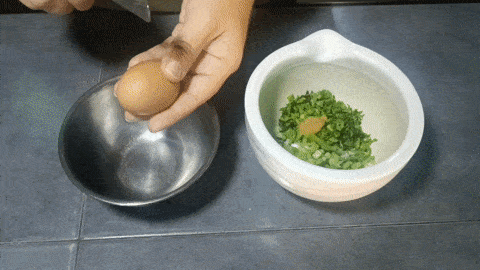
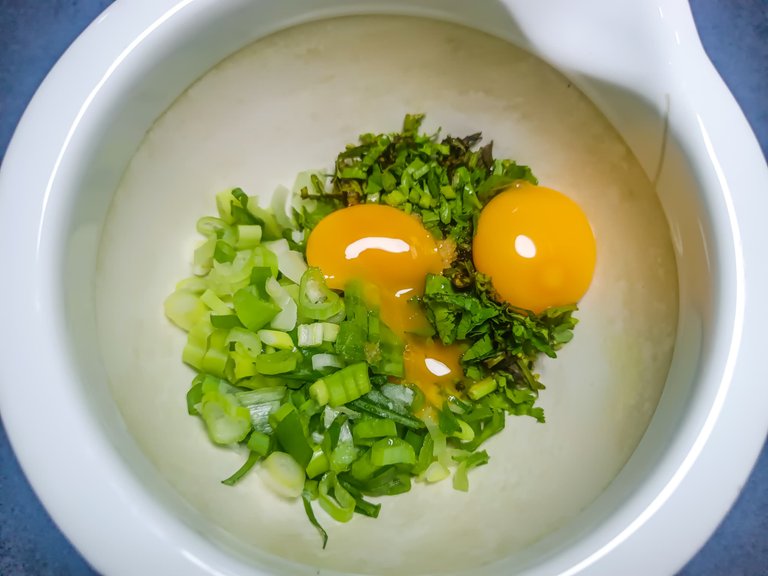
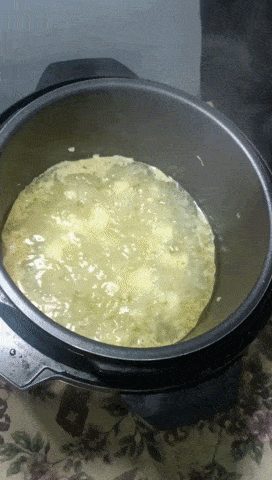
At this point begins the magic of the mortar, with the help of a spoon we will integrate little by little to the ingredients that are waiting in the mortar a splash of oil, the 250 milliliters of milk and the 5 soda crackers, until they are a single mixture.
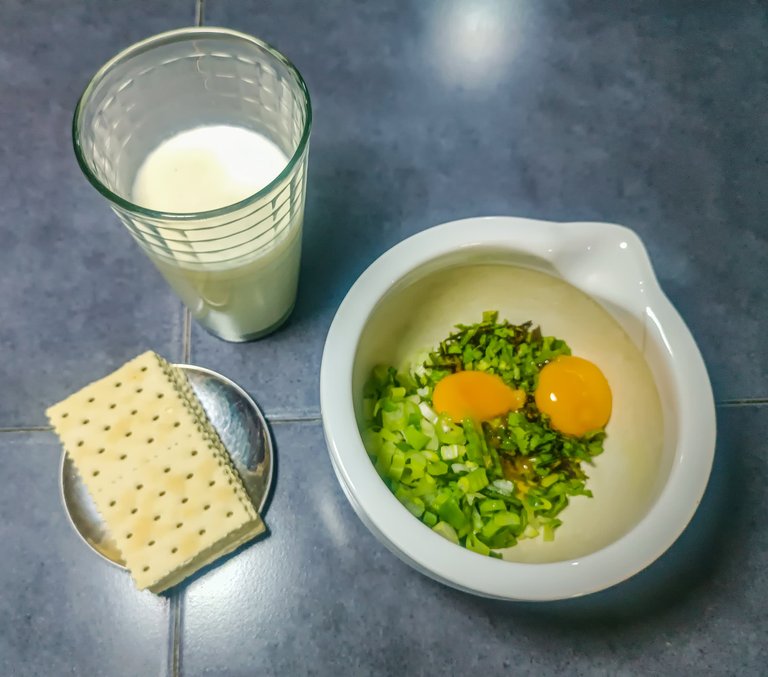
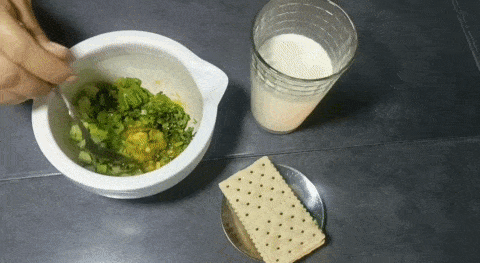
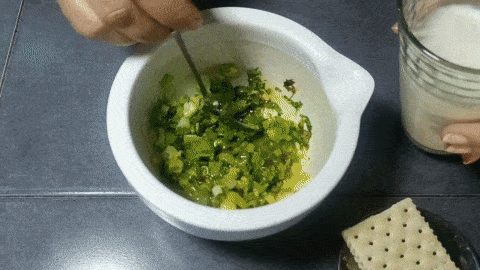
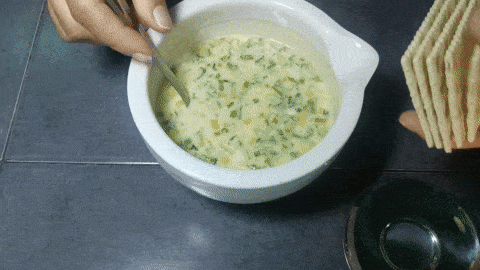
We are approaching the end of this delicious recipe, by this time the potato is already soft and the rest of the ingredients have released all the substances that give flavor to our broth, then we will add the mixture of the mortar who will be in charge of curdling it, while we stir it constantly until it thickens and when this happens we will turn off the fire, in my case I turn off the pot, since I use the electric pot. It is important to stop the cooking because we do not want it to boil again.
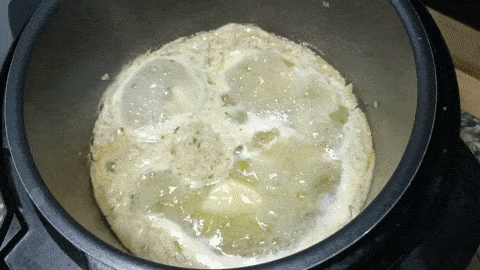
When the fire is turned off, immediately add the two remaining eggs so that they cook with the heat of the broth. I would like to add that in my case I only used two eggs at the end, since we usually serve one egg per person and at home there are two of us. As the recipe is designed for four dishes, in case there are four diners, four eggs are used in this step. For our part we will add, if we want, our eggs later when we enjoy our second course. Although it can also be eaten without them, as by itself this broth is a spectacle.
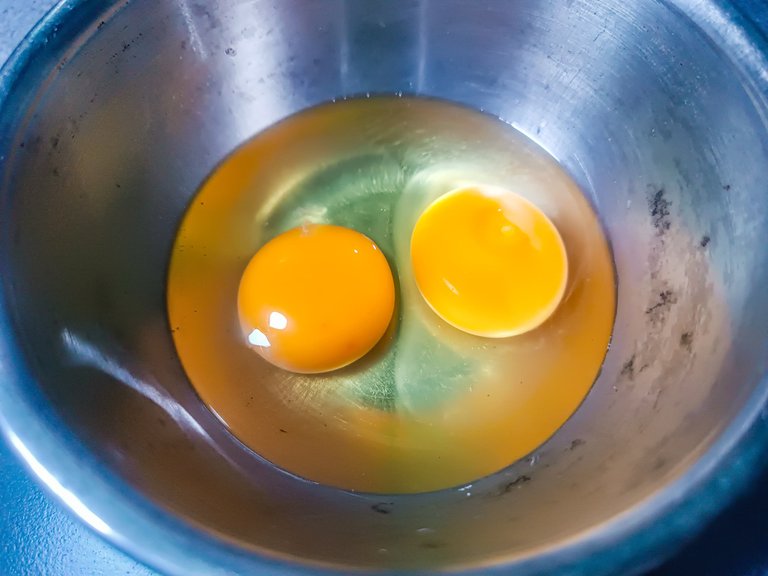
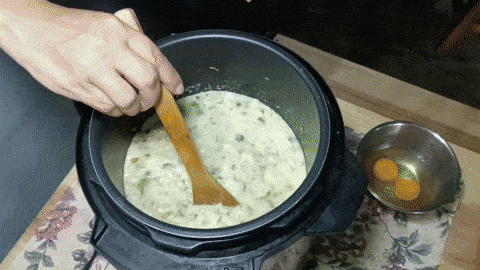
Now our broth is ready to enjoy. Traditionally it is accompanied with the famous Venezuelan arepa. Some people add small pieces of arepa to the broth or simply enjoy it separately, others just enjoy the broth, which as I said is a very complete dish. Either way, this broth is part of the Venezuelan Andean tradition and it is an honor to share it with you.
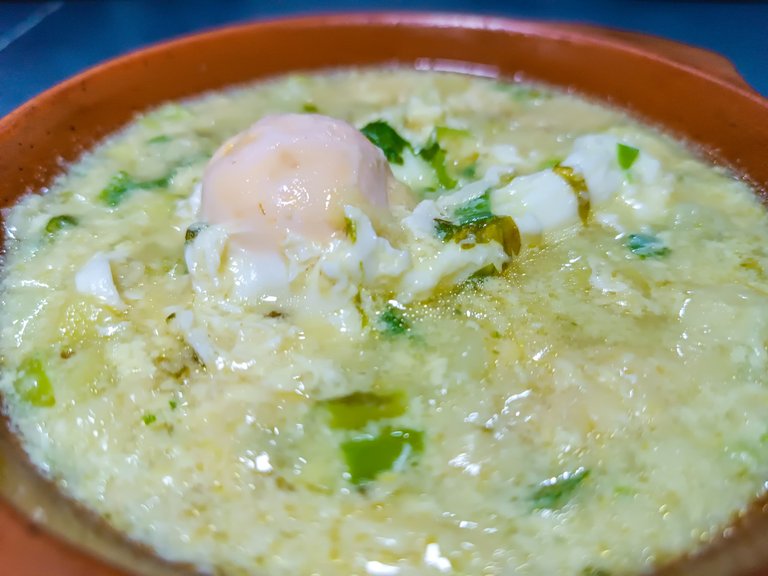
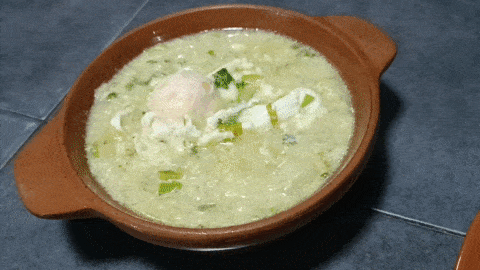
I say goodbye for now dear friends. I am very happy to have shared this special recipe in the hive, I hope to be back here soon. I leave you a big hug, see you soon.
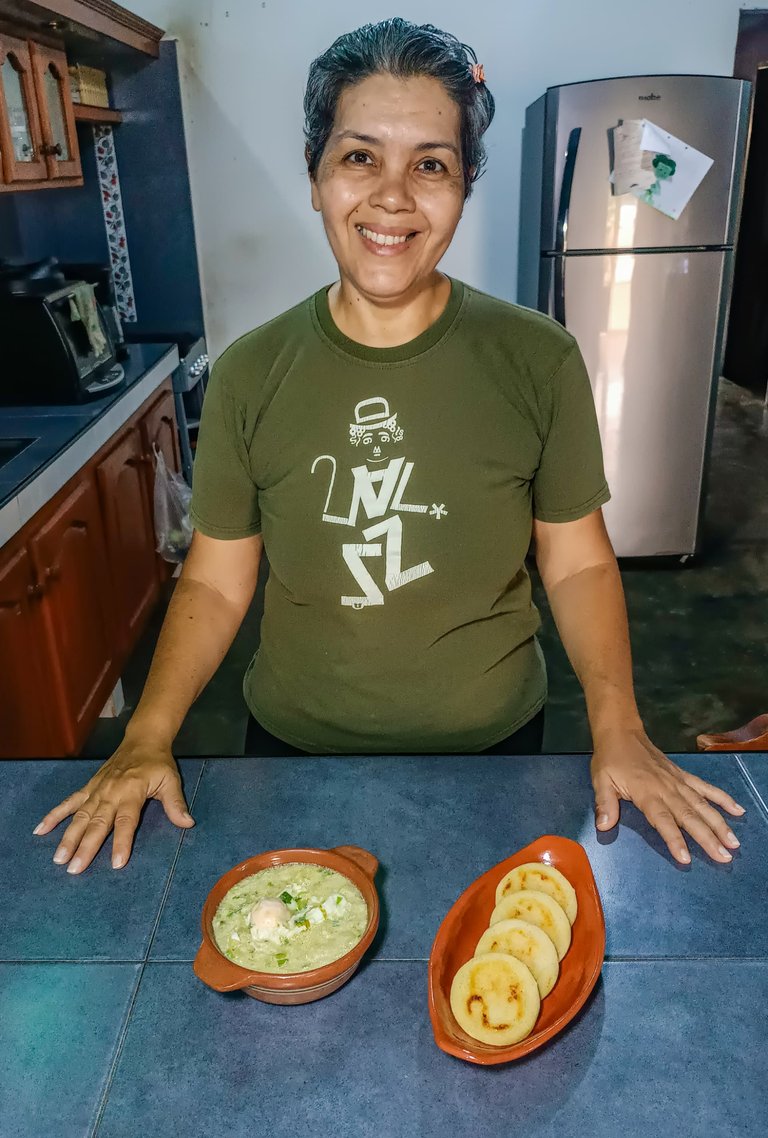
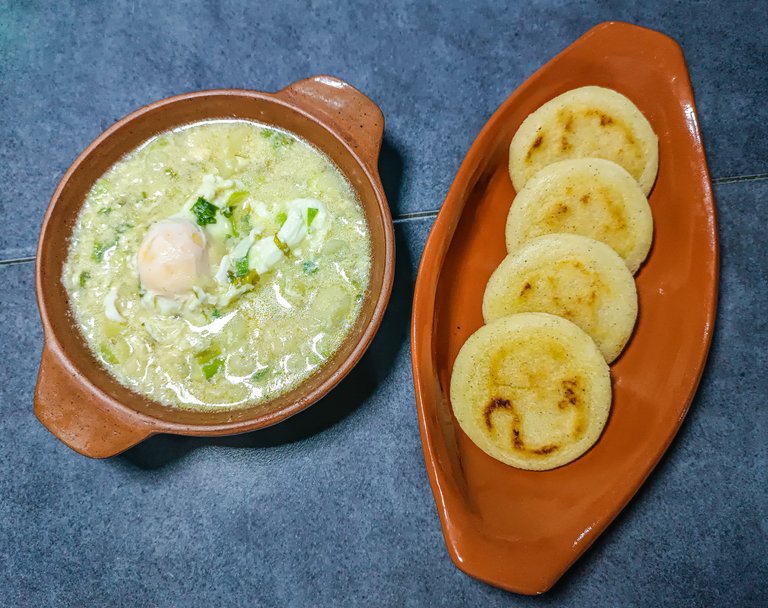
Original content by the author.
Resources: Xiaomi redmi note 11s
Own photos
Translated with Deepl.com
All rights reserved || @jetta.amaya// 2025
Caldo cuajado, delicia de los Andes venezolanos (Ingles/Español)

Un saludo amoroso para todos mis amigos de Hive, especialmente para los amantes de la cocina. El día de hoy les traigo una de mis recetas favoritas, que desde que inicie en Hive había querido compartir con ustedes. Se trata del caldo cuajado, también conocido como pizca andina. Este es uno de los platos más representativos de la región andina de Venezuela. También esta receta es muy especial para mí porque es la herencia más hermosa que me dejaron las mujeres de mi familia por parte de mi madre, mi abuela lo preparo durante toda su vida y enseño su preparación a mis tías y mi madre, quienes competían entre ellas para ver quien lo hacía más parecido a mi abuela. Me crie en esa divertida competencia y puedo decir modestamente que de las nietas yo fui la que mejor aprendí el arte del caldo cuajado. Y no porque lo diga yo, sino porque en las reuniones familiares siempre me pedían que lo hiciera para los desayunos en las mañanas frescas de la ciudad de San Cristóbal, ya que según mis tías y mis tíos era igual que el de mi abuela.
A continuación les dejare los ingredientes y el paso a paso para realizar cuatro porciones del maravilloso y tradicional caldo cuajado.
Ingredientes
- 4 huevos
- 4 papas medianas
- 50 gramos de cebolla larga
- 250 mililitros de leche
- ½ ají dulce verde
- 5 galletas de soda
- 1 cucharada de ajo
- ½ cucharada de comino
- Agua
- Cilantro
- Aceite
- Sal


Lo primero que vamos a hacer es picar la cebolla larga, el ají dulce y el cilantro. Cuando ya tengamos nuestros vegetales picados, vamos a separarlos en dos partes la cebolla larga y el cilantro. Una de estas dos partes la arrojaremos al mortero de cocina y le incorporaremos ½ cucharada de ajo molido, aquí ocurrirá la magia.




Pero antes de dedicarnos a lo que tenemos en el mortero, pondremos en nuestra olla favorita 1,2 litros de agua y a esta le agregaremos el restante de la cebolla larga y el cilantro, junto al ají dulce, ½ cucharada de comino, 1 cucharada de sal, chorrito de aceite y otra ½ cucharada de ajo.



Ahora nos dispondremos a pelar y trocear las papas, y en el instante en que el agua hierva las arrojaremos en ella.



Mientras tanto tomaremos dos de los huevos y separaremos las yemas de las claras. Las yemas irán directamente al mortero. En cuanto a las claras, las pondremos en un recipiente donde aguardarán los minutos necesarios para que la papa esté blanda. Y cuando estoy ocurra, las incorporaremos también poco a poco a la olla.



En este punto comienza la magia del mortero, con ayuda de una cuchara integraremos poco a poco a los ingredientes que aguardan en el mortero un chorrito de aceite, los 250 mililitros de leche y las 5 galletas de soda desboronadas, hasta que sean una sola mezcla.




Nos acercamos al final de esta deliciosa receta, para este momento la papa ya está blanda y el resto de los ingredientes liberaron todas las sustancias que le dan sabor a nuestro caldo, entonces agregaremos la mezcla del mortero quien se encargará de cuajarlo, mientras la removemos constantemente hasta que espese y cuando esto ocurra apagaremos el fuego, en mi caso apago la olla, ya que uso la olla eléctrica. Es importante detener la cocción porque no nos conviene que hierva otra vez.

Al apagar el fuego, de inmediato agregaremos los dos huevos restantes para que se cuezan con el calor del caldo. Quiero agregar, que en mi caso utilice solo dos huevos al final, ya que generalmente se sirve un huevo por persona y en casa somos dos. Como la receta está planteada para cuatro platos, en caso de que hallan cuatro comensales, se utilizan cuatro huevos en este paso. Por nuestra parte agregaremos, si queremos, nuestros huevos más tarde cuando disfrutemos de nuestro segundo plato. Aunque también se puede comer sin ellos, ya que por sí solo este caldo es un espectáculo.


Ya nuestro caldo está listo para disfrutar. Tradicionalmente se acompaña con la famosa arepa venezolana. Algunos le agregan pequeños trozos de arepa al caldo o simplemente la disfrutan por separado, otros tantos disfrutan solo el caldo, que como dije es un plato bastante completo. Sea como sea, este caldo forma parte de la tradición andina venezolana y es un honor compartirla con ustedes.


Me despido por ahora queridos amigos. Estoy muy contenta de haber compartido esta receta tan especial en la colmena, espero pronto volver por acá. Les dejo un gran abrazo, hasta pronto.


Contenido original del autor.
Recursos: Xiaomi redmi note 11s
Fotos propias
Traducido con Deepl.com
Todos los derechos reservados || @jetta.amaya// 2025
That looks so good!
It is a delicious recipe. Thanks for visiting me and commenting. Greetings
Wow, it looks really delicious😋
This broth is my favorite, I remember that when I felt cold I would ask my mom for it and it was miraculous hahaha. I love its texture and flavor. Thanks for visiting and commenting.
you're welcome sis♥️
Me encanta este plato tradicional... Por favor invitame a comer.
Me gusta como explicas el paso a paso de la receta... Gracias por compartir
!discovery 45
Siempre estás invitada tu y familia. Gracias por visitarme y comentar. Un abrazo. Saludos
This post was shared and voted inside the discord by the curators team of discovery-it
Join our Community and follow our Curation Trail
Discovery-it is also a Witness, vote for us here
Delegate to us for passive income. Check our 80% fee-back Program
Thanks for the support. Greetings
you are welcome, if you can support our witness it would help us a lot!!
This looks delicious and interesting
Thanks for stopping by my post and commenting. It's really very delicious. Greetings